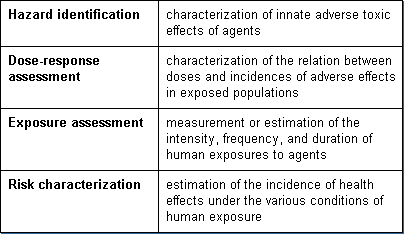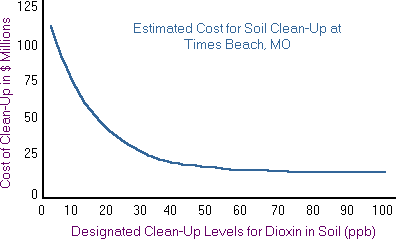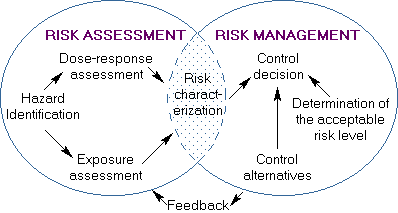|
 |
 |
 |
 |
|
|
|






Risk Assessment

For many years the terminology and methods used in human risk or hazard assessment were not consistent. This led to confusion among scientists and the public. In 1983, the National Academy of Sciences (NAS) published standard terminology and concepts for risk assessments.
The following terms are routinely used in risk assessments:

Four basic steps in the risk assessment process as defined by the NAS are:

Risk management decisions follow the identification and quantification of risk which are determined by risk assessments. During the regulatory process, risk managers may request that additional risk assessments be conducted to justify the risk management decisions. As indicated in the figure above, the risk assessment and risk management processes are intimately related.
This section will describe only the risk assessment process. Risk assessments may be conducted for individual chemicals or for complex mixtures of chemicals. In cases of complex mixtures, such as hazardous waste sites, the process of risk assessment itself becomes quite complex. This complexity results from:
 |
 |
 |
|  | simultaneous exposure to many substances with the potential for numerous chemical and biological interactions
|
 |
|  | exposures by multiple media and pathways (e.g., via water, air, and soil)
|
 |
|  | exposure to a wide array of organisms with differing susceptibilities (e.g., infants, adults, humans, animals, environmental organisms)
|
 |

Conducting scientifically sound risk assessments is of great national importance. An error in undercalculating risk probabilities could lead to overexposure of the population. On the other hand, an overcalculation of risk could result in unwarranted costs to the public. As illustrated above, the cost to clean-up a hazardous waste site varies greatly with the degree of clean-up required which is determined by risk assessments.

  
|
|
|
|




